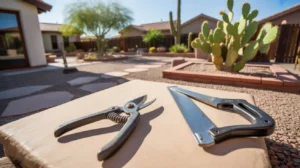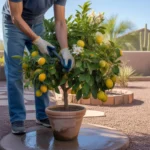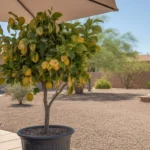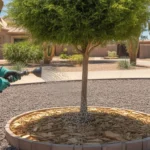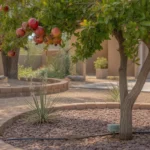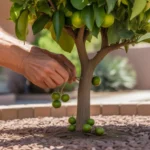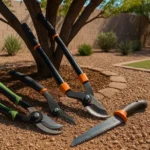Pruning your trees in the scorching Gilbert summer takes finesse. While well-timed cuts can shape your yard and remove damaged branches, pruning at the wrong time can stress or harm your trees. To keep your trees thriving through the intense heat, follow these summer pruning dos and don’ts.
🌴 Do: Prune After the Worst Heat Has Passed
In Gilbert, the best window for summer pruning is late August through early October, once temperatures start to dip below 100°F. Pruning in the most extreme heat can shock trees that are already stressed by the weather.
If you need to do minor pruning or remove damaged limbs in June or July, aim for cooler morning hours. But for major shaping cuts, it’s best to be patient. Your trees will thank you for waiting until that first break in the heat.

🙅♀️ Don’t: Prune Sun-Sensitive or Younger Trees in Summer
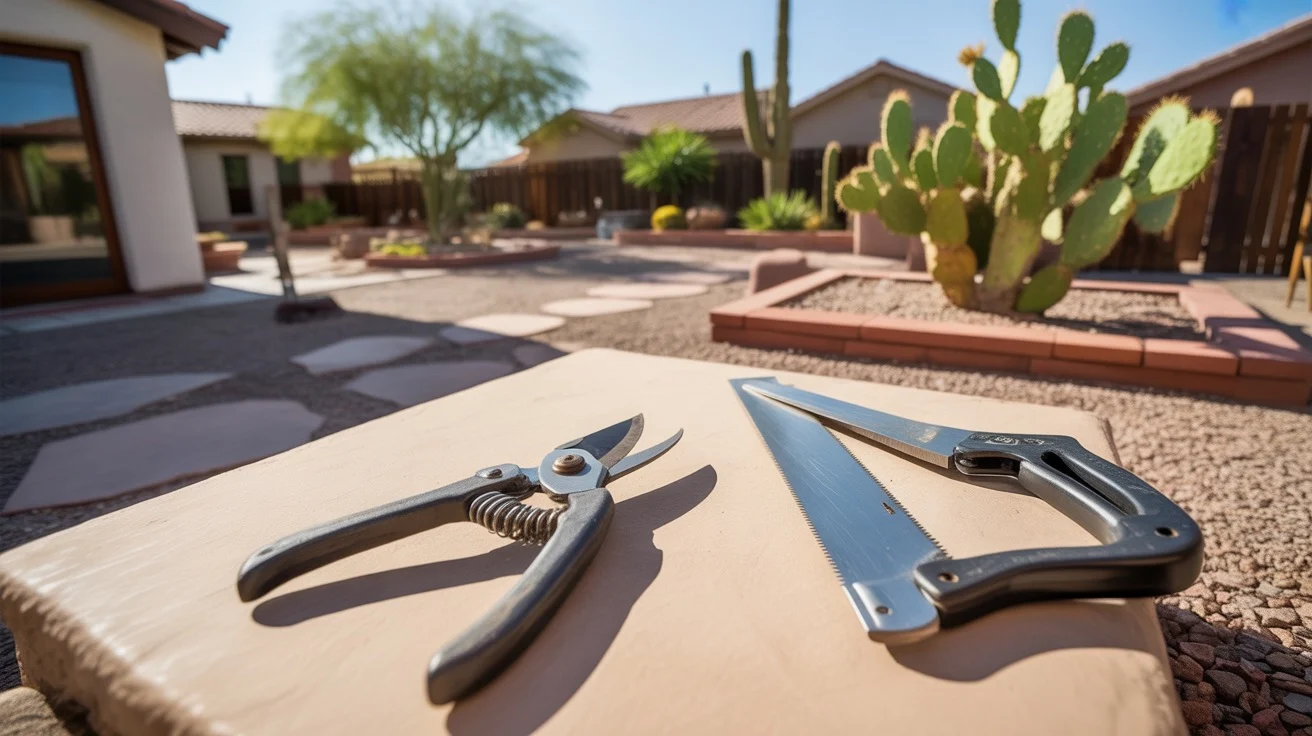
Some desert trees are more vulnerable to summer pruning than others. Avoid warm-season pruning of:
- Palo verdes
- Mesquites
- Ironwoods
- Acacias
- Any tree under 3 years old
These species are prone to sunburn on newly exposed bark. The tender bark beneath dense foliage isn’t ready for direct sun exposure. Pruning before cooler fall weather arrives can lead to scorched, damaged bark.
Young trees are also at higher risk, as their bark hasn’t fully toughened up yet. Let them leaf out and develop a sturdy canopy before pruning heavily. Stick to just removing dead or damaged wood on young trees until fall.
✂️ Do: Make Clean, Sharp Cuts
No matter when you prune, always use sharp, clean tools to make precise cuts:
- Sanitize blades with rubbing alcohol before and after pruning
- Make cuts at a 45-60° angle to promote healing
- Avoid leaving stubs or ragged cuts, which invite pests and disease
- Cut back to a healthy lateral branch or bud
Clean cuts are especially crucial in summer, as open wounds are vulnerable to pests and heat stress. Jagged, sloppy cuts will take longer to callus over, leaving trees open to borers, fungi and sunburn damage.
🍂 Don’t: Remove Too Much Foliage at Once
When pruning in summer, always leave enough foliage to shade the tree’s bark. Removing too much leaf cover exposes once-shaded branches to harsh direct sun.
As a rule of thumb, never remove more than 25% of a tree’s live foliage at one time, especially in summer. Overtrimming forces trees to push out new growth while they’re already heat-stressed. That tender new growth is extra vulnerable to scorch and pests.
If major pruning is needed, space it out over several sessions in late summer and fall. Incremental cuts are less stressful than one big haircut. Your tree will look shapelier and stay healthier in the long run.
🎯 Do: Have a Plan and Purpose
Every pruning cut should have a clear purpose. Before you start snipping, assess your tree’s overall shape and health. Identify your goals, whether it’s lifting the canopy, removing crossed branches, or thinning for better airflow.
Make a pruning plan and stick to it – avoid getting snippy once you have tools in hand. Purposeful, intentional cuts prevent over-pruning and keep your tree’s natural shape in balance.
Common summer pruning goals for desert trees include:
- Raising the canopy for more shade
- Removing dead, damaged or diseased wood
- Selective thinning to improve air circulation
- Reducing competition between crowded branches
🚫 Don’t: Prune Too Close to Monsoon Season
While summer rains are a welcome relief, monsoon season isn’t an ideal time to prune. Damp conditions can spread diseases like fireblight or fungal infections through pruning wounds.
Aim to complete your pruning at least a few weeks before monsoon moisture arrives in July. This gives cuts time to heal cleanly before the rainy season hits.
If you need to prune to repair monsoon damage, wait until things dry out in late August or September. Use a pruning sealer on storm-damaged cuts to prevent disease spread.
🌿 Do: Shape Gradually Over Several Seasons
Shaping a mature tree is a long-term process, not a one-day chop. Pace your pruning over several seasons for the best results. Incremental cuts are less stressful and give you a chance to step back and assess as you go.
To lift a canopy gradually:
- Remove a few lower limbs each season, starting with the lowest
- Progressively work your way up the canopy over 2-3 years
- Take breaks between pruning to let the tree adapt
- Aim for an eventual clearance of at least 6-8 feet under mature trees
This slow-and-steady approach is easier on the tree and gives you more control over the final shape. It also avoids the sunburn risk of sudden canopy raising.
🌞 The Golden Rule: Respect the Heat
Gilbert’s intense summer heat is the biggest factor in warm-season pruning. When in doubt, err on the side of restraint. It’s always better to underprune than overprune when temperatures are high.
By timing your cuts carefully, working with the tree’s natural shape, and respecting the heat, you’ll keep your trees thriving for many summers to come. With these summer pruning dos and don’ts, you’re ready to tame your Gilbert trees like a pro.

